name: inverse layout: true class: center, middle, inverse --- background-image: url(img/context/people-background.png) # The Physical Phone Jennifer Mankoff CSE 340 Spring 2019 --- layout: false [//]: # (Outline Slide) .left-column[# Today's goals] .right-column[ - Talk about myths about phone use - Talk about what a phone can sense ] --- .title[Context Aware Computing] .body[ <div class="mermaid"> graph TD I(Input) --Explicit Interaction--> A(Application) A --> Act(Action) U(User) --Implicit Sensing--> C(Context-Aware Application) S(System) --Implicit Sensing--> C E(Environment) --Implicit Sensing--> C C --> Act2(Action) classDef normal fill:#e6f3ff,stroke:#333,stroke-width:2px; class U,C,A,I,S,E,Act,Act2 normal </div> ] --- .left-column[  ] .right-column[ ## Human Activity and Context Awareness - Useful, and necessary, input to context-aware systems - Easier and easier to collect information about human activity ] .footnote[[Image credit](https://www.techherd.co/iot-mobile-threats/) ] ??? Improved software and inferencing Improved sensors --- .left-column[ ## Computational Behavioral Imaging ] .right-column[ 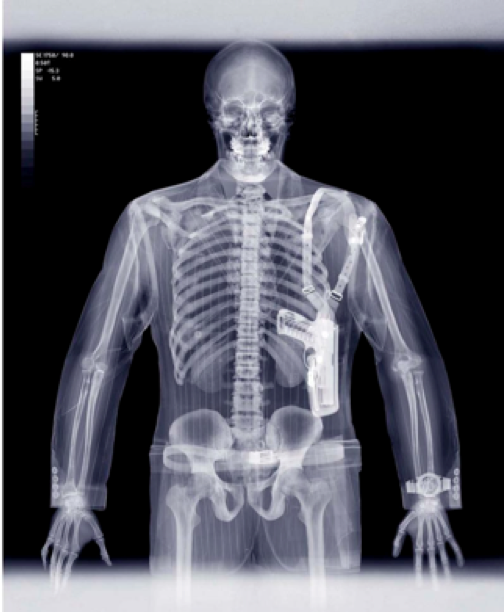 ] --- .left-column[ ## Computational Behavioral Imaging ] .right-column[   ] --- .left-column[ ## Computational Behavioral Imaging ] .right-column[   ] --- .left-column[  ] .right-column[ ## Phones People already carry them Interactions with information: virtual Social engagement: social Loads of sensors: physical ] --- .title[ Example phone sensors ] .body[ | | | | |--|--|--| |Accelerometer | Rotation | Screen| |Applications | Location | Telephony| |Battery | Magnetometer | Temperature| |Bluetooth | Network Usage | Traffic| |Calls | Orientation | WiFi| |Messaging | Pressure | Processor| |Gravity | Proximity | ... Many More | |Gyroscope | Light | | ] --- .left-column[ ## Assumptions ] .right-column[ We have made a number of .red.bold[WRONG] assumptions about: - what smartphones are - how they are used ] --- .left-column[ ## Assumption #1: We all have smart phones 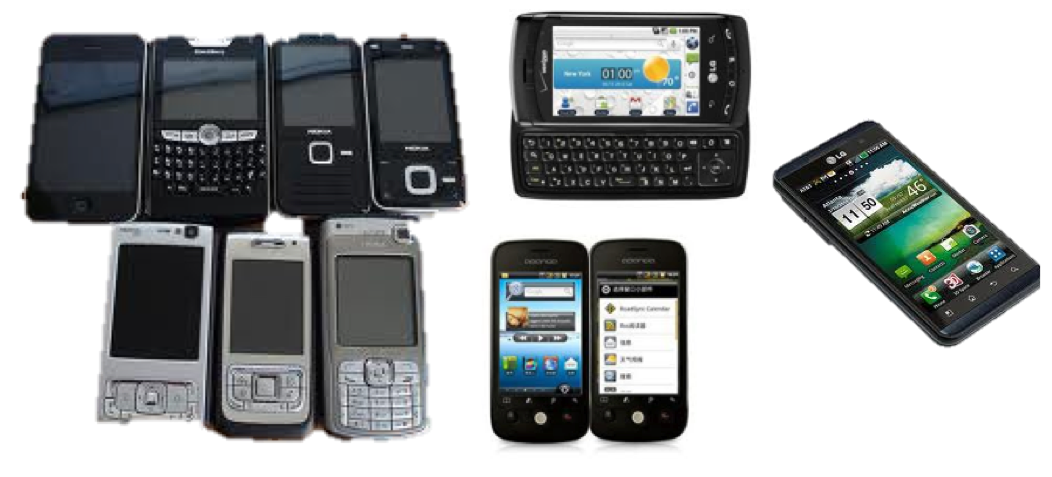 ] .right-column[ What is a smart phone? ] ??? What do you think? --- .left-column[ ## Assumption #1: We all have smart phones  ] .right-column[ What is a smart phone? - Runs a complete mobile OS - Offers computing ability and connectivity - Includes sensors ] -- .corner-ribbon.brtl[All Marketing] --- background-image: url(img/context/phones-background.png) .title[Dumb (Feature) Phones] .body[ We live in a time of dumb phones Know almost nothing about me Explicit preferences Contacts Running applications Hardly knows when I’m mobile/fixed, charging/not charging Doesn’t know me or what I’m doing ] -- .corner-ribbon.purple.tlbr[WHY NOT???] --- .left-column[ ## Goal: Re-cast Assumption #1  ] .right-column[ Want to build a smart phone that - Collects and learns a model of human behavior with every interaction - From the moment the phone is purchased and turned on - Uses behavior information to improve interaction and the user experience - Do this opportunistically - Your noise is my signal! - Big Data of 1 ] ??? How close are we to this? - Amazing amounts of computation at hand - Memory and storage - Radios and communication - Sensors - Software --- .title[Big Data of One] .body[ Build compelling and useful apps that provide value in everyday life and a compelling user experience Think about what you can do with big data for 1 with origins in everyday activity ] ??? let the class discuss --- .left-column[ ## Assumption #2: Usage is Notification Driven 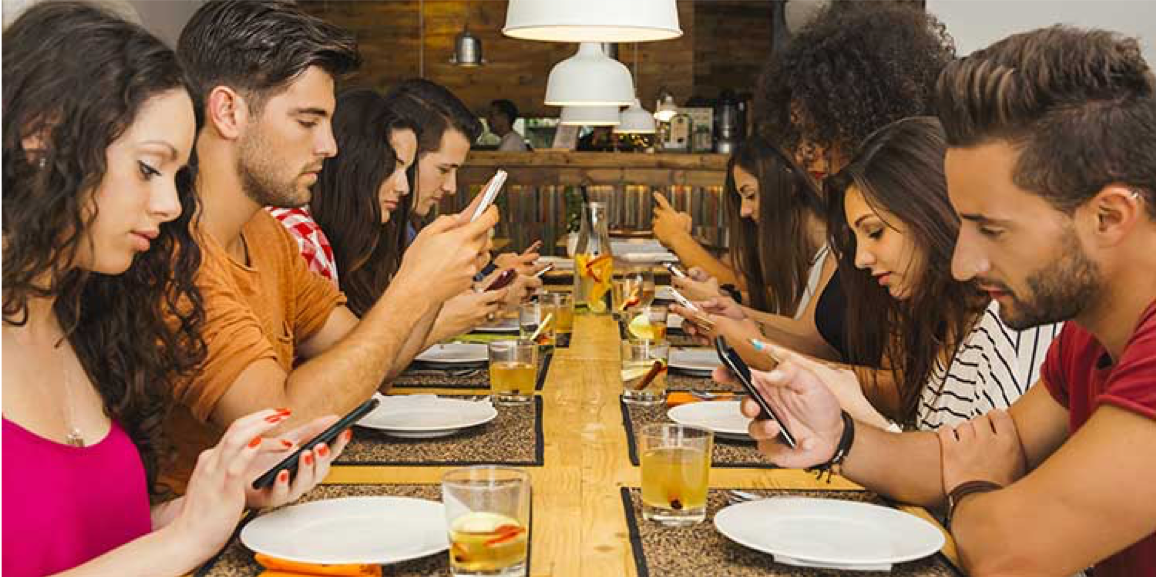 ] .right-column[ What do we know about how people use their mobile devices? - “Always on the phone!” - “Notifications are ruining my life!” ] --- .title[Characterizing Usage] .body[ 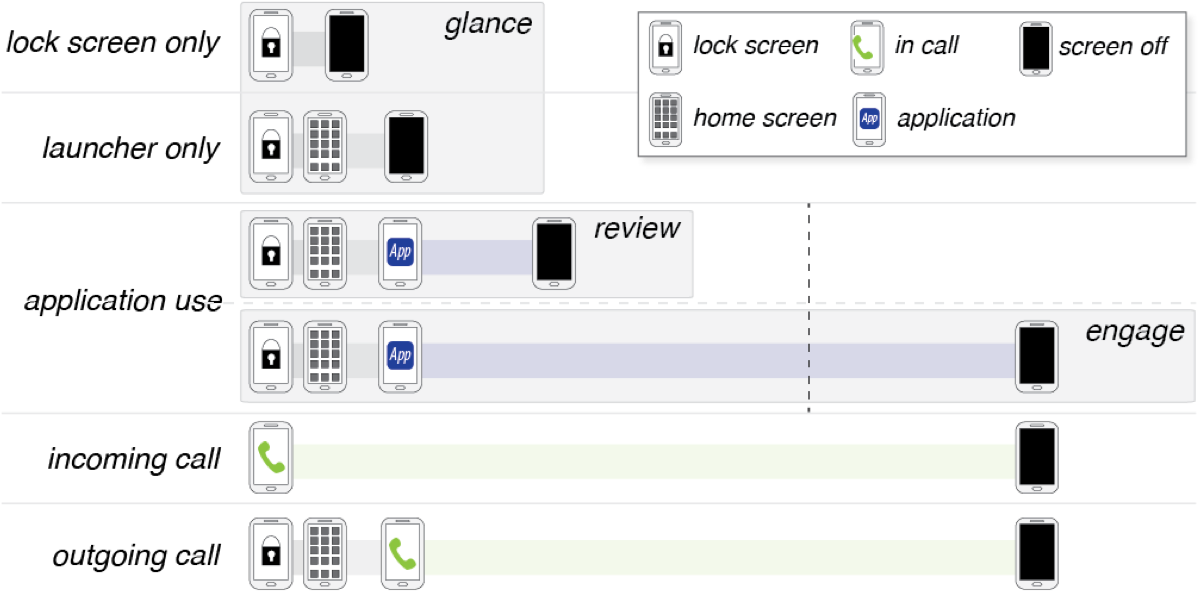 ] .footnote[Based on 1 months data from 10 participants] --- .title[Characterizing Usage] .body[ 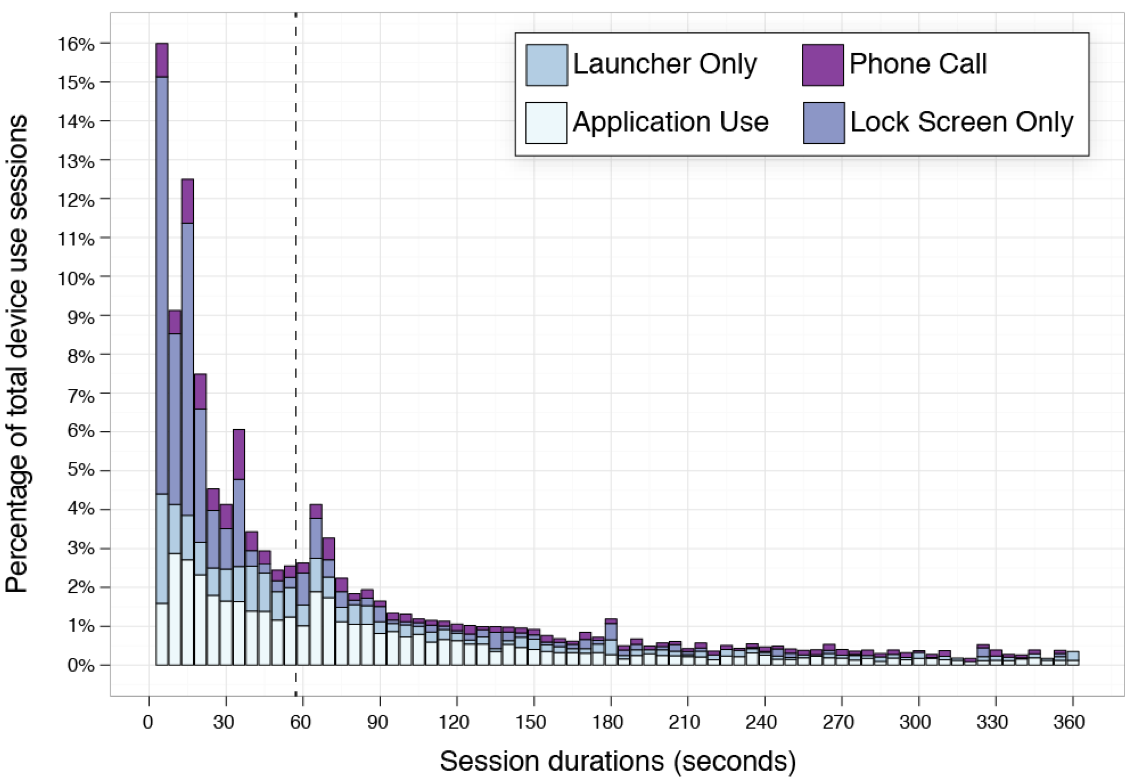 ] ??? 95% of sessions shorter than 5 minutes; most < 60 secs Notifications lead to engagement… only 25% of the time! Self-interruption therefore more common than we would think Notifications prevent unnecessary engages No good support for reviews --- .left-column[ # Glance  ] .right-column[ ![:youtube Glancing at a phone without engaging, 4pXLqDZCFwo] ] --- .left-column[ # Review  ] .right-column[ ![:youtube Reviewing on a phone, vsPkU8fHp-c] ] --- .left-column[ # Engage  ] .right-column[ ![:youtube Reviewing on a phone, NCwj3__BFxQ] ] --- .left-column[ ## Opportunity: Leverage real knowledge about phone use  ] .right-column[ Engage people when appropriate Avoid interrupting when not Make short interactions more powerful ] --- .left-column[ 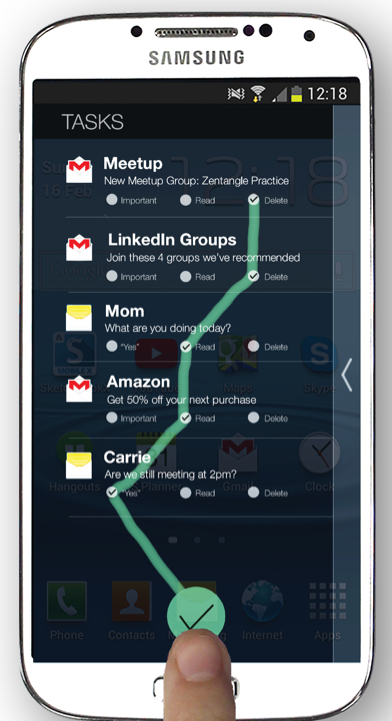 ] .right-column[ ## Example: pro-active tasks Provide access to email management, etc right on lock screen ] --- .left-column[  ] .right-column[ ## Example: pro-active tasks Provide access to email management, etc right on lock screen Study of phone use (10 users, 4 weeks) 95% of sessions shorter than 5 minutes; most < 60 secs No good support for quick task completion (just viewing things) ] --- .left-column[ ## All users 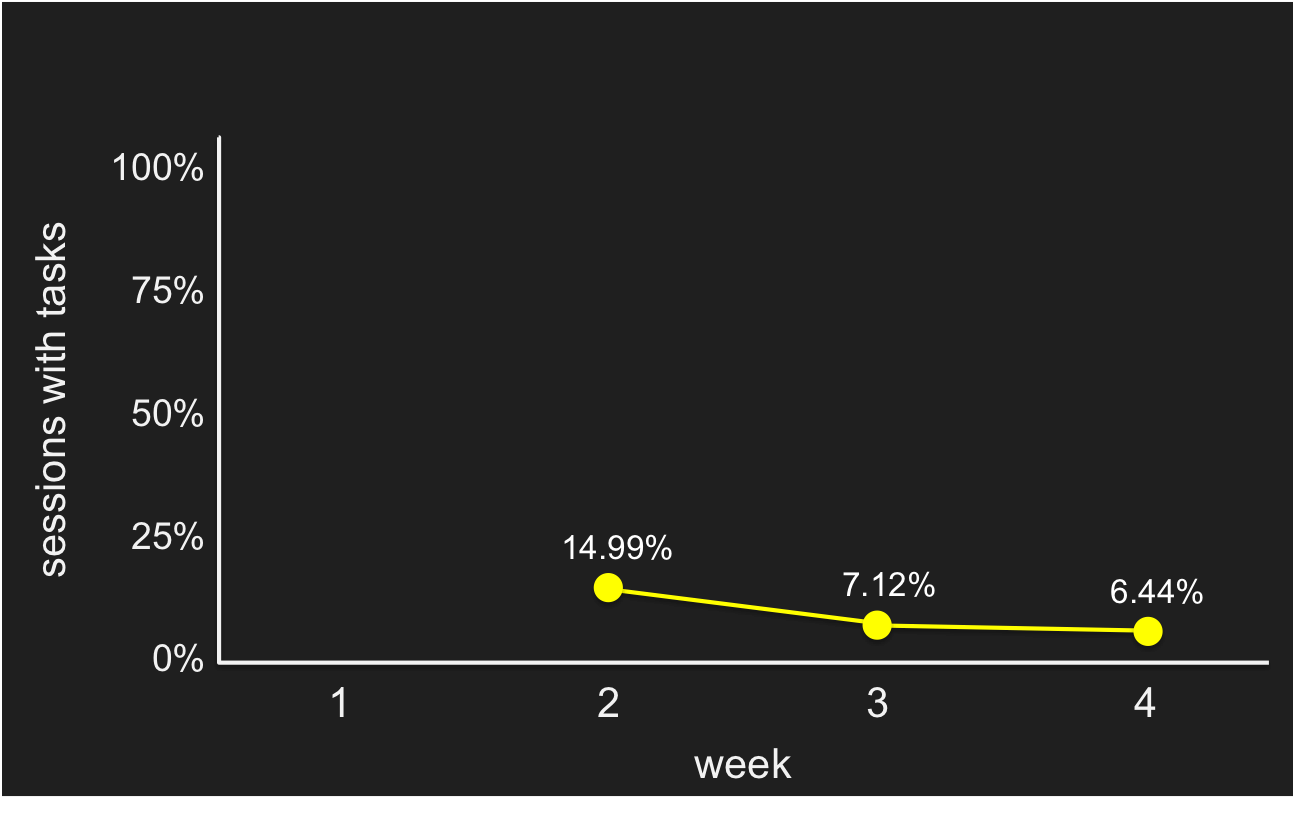 ] .right-column[ ## Results 25 participants - 10 nonusers (4% of lockscreen views with a task or less per week) - 9 regular users (5-10% of lockscreen views with a task per week) - 5 power users (40-60% of lockscreen views!) ] ??? regular users mostly used the tasks when they had some down time, or when bored or nothing better to do. power users who applied actions to email in more than 1/3 of sessions when tasks were present on their lock screen. --- .left-column[ ## Cleaners 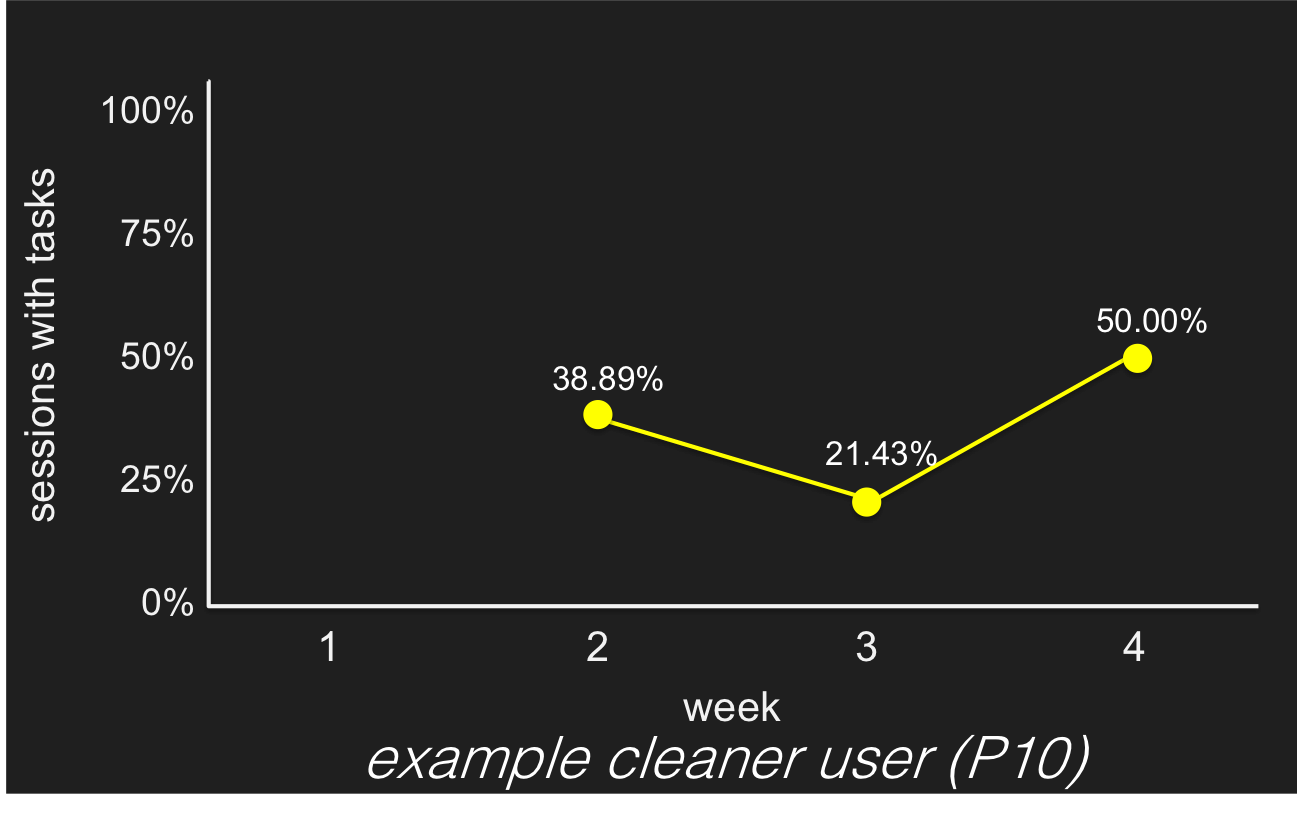 ] .right-column[ ## Results 25 participants - 10 nonusers (4% of lockscreen views with a task or less per week) - 9 regular users (5-10% of lockscreen views with a task per week) - 5 power users (40-60% of lockscreen views!) - 3 'cleaners' ] ??? We also found a special kind of power users called cleaners. They rarely had any unread emails in their inbox and used ProactiveTasks to keep their inbox clear of any unwanted emails. --- .left-column[ ## Assumption #3: Proximity is standard] .right-column[ We assume that users have their phones with them and turned on 24-7 Which is great for things like health apps and behavior modeling - Mobile phone is personal and travels with the user - Proxy for user context - Proxy for user’s environment context - Proxy for user’s attention/display device - Provide always-available service ] --- .left-column[ ## Assumption #3: Proximity is standard] .right-column[ ## How much of the day is your phone on? Average user: 78-81% [Dey, 2011] One-fifth of the time, phone is off Can’t sense anything Can’t show anything to the user ] --- .left-column[ ## Assumption #3: Proximity is standard ] .right-column[ ## When your phone is on, where is it? Within arm’s reach ] --- .left-column[ ## Assumption #3: Proximity is standard ] .right-column[ ## When your phone is on, where is it? - Within arm’s reach - Within the same room ] --- .left-column[ ## Assumption #3: Proximity is standard 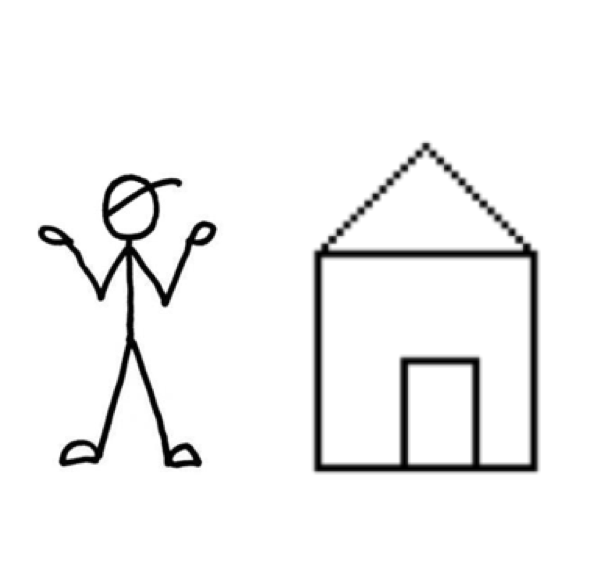] .right-column[ ## When your phone is on, where is it? - Within arm’s reach (53%) - Within the same room (35%) - Further away? (12%)  ] --- .left-column[ ## Assumption #3: Proximity is standard ] .right-column[ ## Challenges for interpreting phone data Can't use the phone as a proxy for the user May need complementary sensors - smart watch - fitbit - room level sensing ] --- .left-column[ ## Assumption #4: Need is Necessary  ] .right-column[ .quote[When asked which device or platform they would not be able to live without, a majority (65%) chose iPhone, while only a few (1%) [...mentioned] facebook. Nearly 15% ... ] ] --- .left-column[ ## Assumption #4: Need is Necessary  ] .right-column[ .quote[When asked which device or platform they would not be able to live without, a majority (65%) chose iPhone, while only a few (1%) [...mentioned] facebook. Nearly 15% ... .red[said they'd rather give up sex than go for even a weekend without their iPhone] Now *thats* love. ] ] --- .left-column[ ## Assumption #4: Need is Necessary  ] .right-column[ 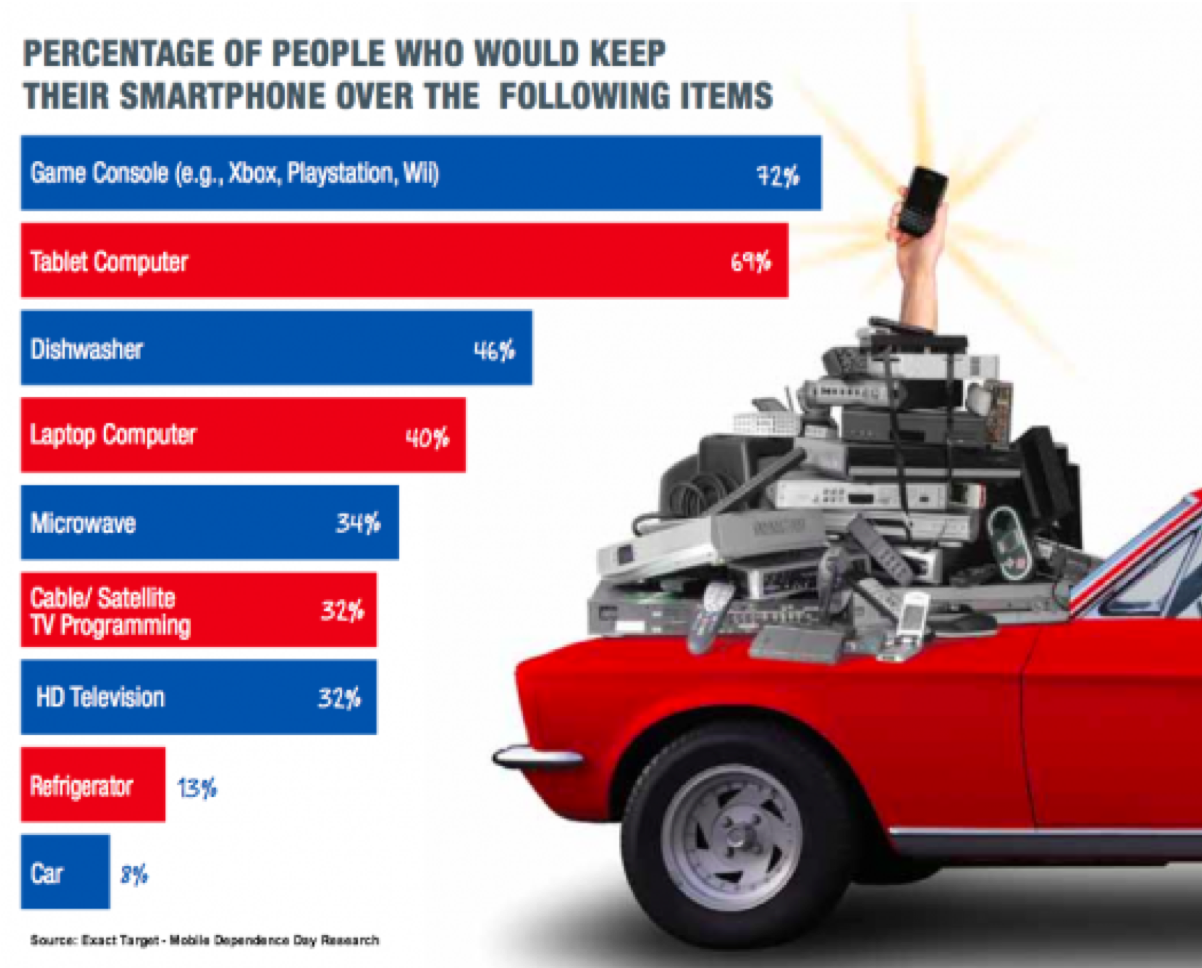 ] --- .left-column[ ## Assumption #4: Need is Necessary ## Should we combat this? How? ] .right-column[ [Hinicker](https://www.alexishiniker.com/) (works at UW): - Can devices teach self-regulation, rather than trying to regulate children? - Why do people compulsively check their phones? Can they change this? [Burke](http://thoughtcrumbs.com/) (works at Facebook): - [Watching silly cat videos is good for you](https://www.wsj.com/articles/why-watching-silly-cat-videos-is-good-for-you-1475602097) - [Online social life good for your longevity](https://www.nytimes.com/2016/11/01/science/facebook-longer-life.html) ... but [The Relationship Between Facebook Use and Well-Being Depends on Communication Type and Tie Strength](https://academic.oup.com/jcmc/article/21/4/265/4161784) ] --- .left-column[ ## Assumptions - Assumption #1: Phones are smart - Assumption #2: Usage is notification driven - Assumption #3: Proximity is standard - Assumption #4: Need is necessary ] .right-column[ By removing assumptions, we can recast: - the notion of what a smart phone is - how we can use them to improve people’s lives - how to leverage make (personalized) meaning from (your) big data What might we make is in this case? ] ??? We = the research community and now consumers --- .left-column[ ## What might we do with today's phones? 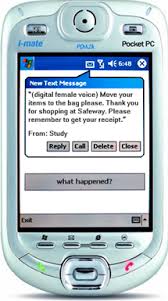 ] .right-column[ Capture and Access: - .red[Food diarying] and nutritional awareness via receipt analysis [Ubicomp 2002] - .bold.red[Audio Accessibility] for deaf people by supporting mobile sound transcription [Ubicomp 2006, CHI 2007] - .red[Citizen Science] volunteer data collection in the field [CSCW 2013, CHI 2015] - .red[Air quality assessment] and visualization [CHI 2013] - .red[Coordinating between patients and doctors] via wearable sensing of in-home physical therapy [CHI 2014] ] --- .left-column[ ## What might we do with today's phones?  ] .right-column[ ## Adaptive Services (changing operation or timing) - .red[Adaptive Text Prediction] for assistive communication devices [TOCHI 2005] - .red[Location prediction] based on prior behavior [Ubicomp 2014] - .bold.red[Pro-active task access] on lock screen based on predicted user interest [MobileHCI 2014] ] --- .left-column[ ## What might we do with today's phones? 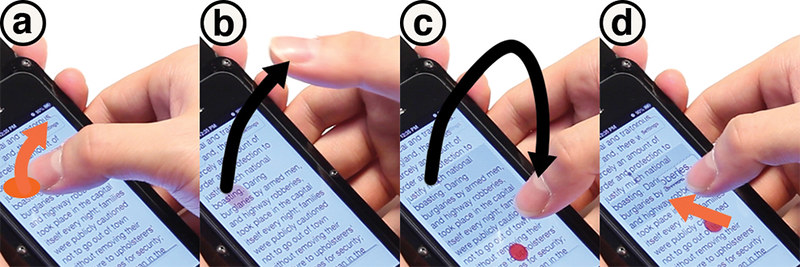 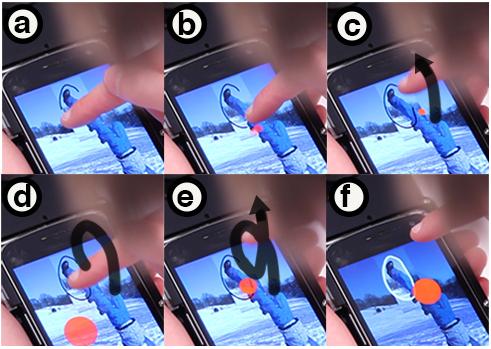 ] .right-column[ ## Novel Interaction - .red[Cord Input] for interacting with mobile devices [CHI 2010] - .red[Smart Watch Intent to Interact] via twist'n'knock gesture [GI 2016] - .red[VR Intent to Interact] vi sensing body pose, gaze and gesture [CHI 2017] - .red[Around Body interaction] through gestures with the phone [Mobile HCI 2014] - .red.bold[Around phone interaction] through gestures combining on and above phone surface [UIST 2014] ] --- .left-column[ ## What might we do with today's phones?   ] .right-column[ ![:youtube Interweaving touch and in-air gestures using in-air gestures to segment touch gestures, H5niZW6ZhTk] ] --- .left-column[ ## What might we do with today's phones? 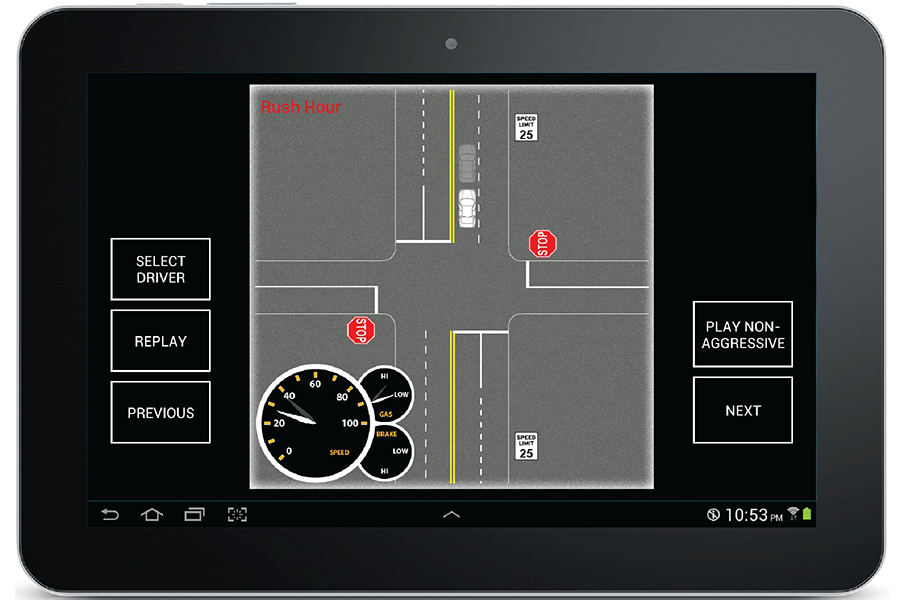 ] .right-column[ ## Behavioral Imaging - .red[Detecting and Generating Safe Driving Behavior] by using inverse reinforcement learning to create human routine models [CHI 2016, 2017] - .red[Detecting Deviations in Family Routines] such as being late to pick up kids [CHI 2016] ] --- .left-column[ ## What might we do with today's phones? 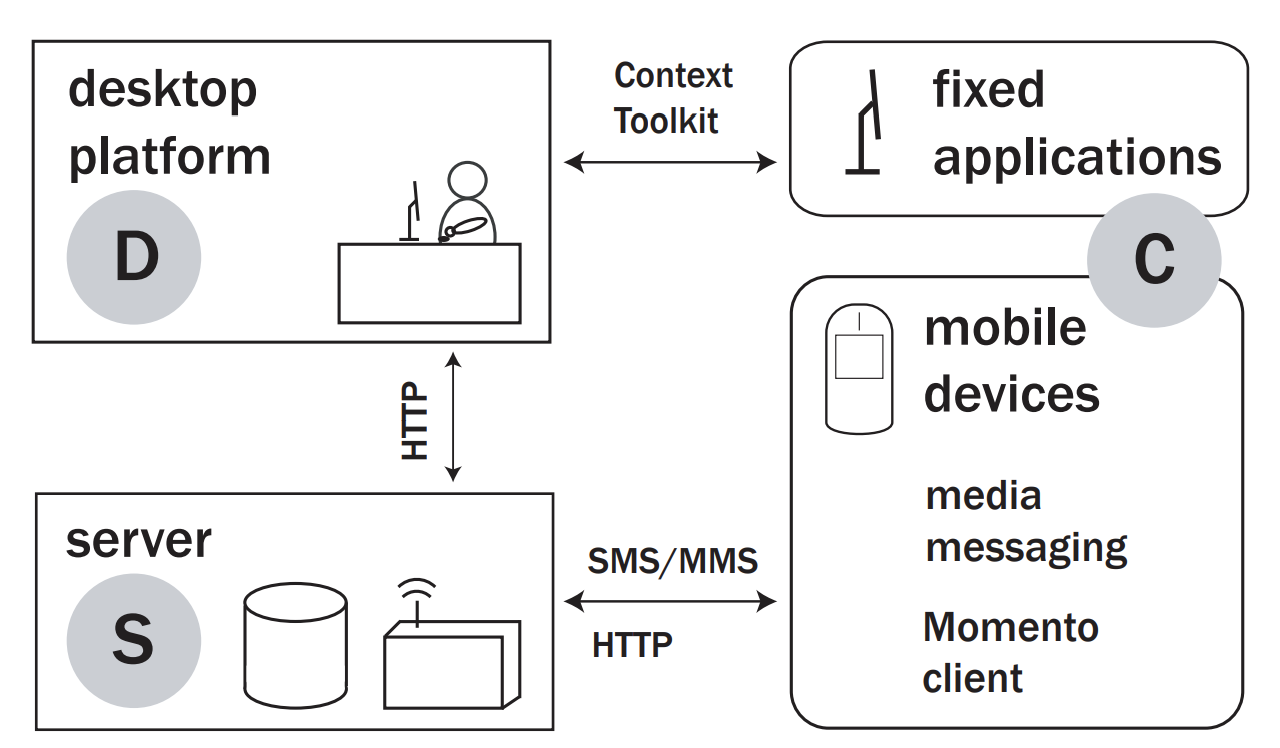 ] .right-column[ ## General Solutions for Data Collection and Response - .red[General solution for studying people in the wild] via mobile sensing and interaction [CHI 2007] - .red[Minimizing user burden] for generating adaptive services via test-time feature ordering [Ubicomp 2016] ] --- .title[Challenges to this vision] .body[ - Battery - Raw sensors not behavior data - Not the sensors we always want - Computational complexity - Latency in communication - Basic software framework to support apps that can adapt to user behavior - Apps that drive innovation - How people use phones ]
layout: true